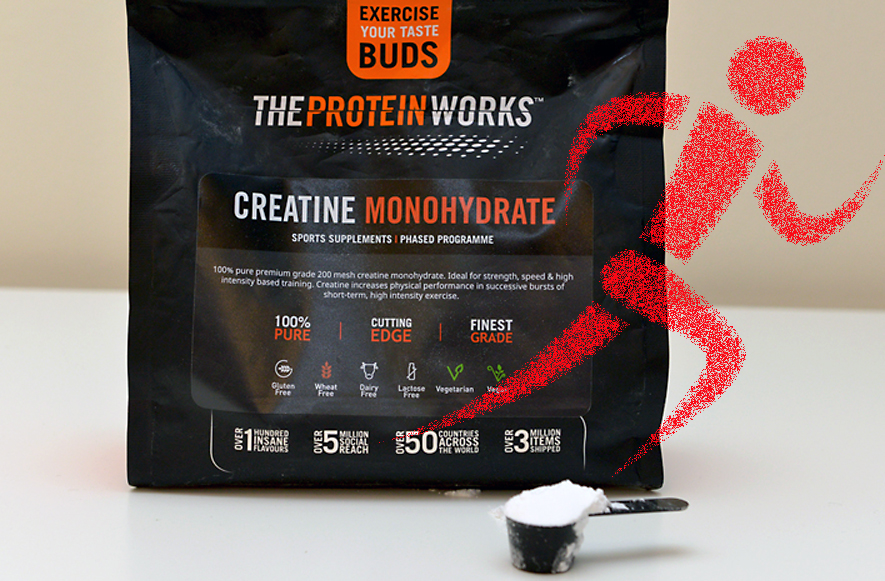You are viewing 1 of your 1 free articles. For unlimited access take a risk-free trial
Weight management and fat loss: a dairy tale come true?

SPB explores the link between the consumption of dairy produce, body composition, weight loss and health
Cross-channel swimmers and sumo wrestlers apart, most athletes perform better without carrying excess body fat – hence the importance of weight management in planning a nutritional strategy. Surplus body fat acts as dead weight, increasing the demands placed on the muscular system and oxygen transport system, and blunting performance.The conventional approach to weight management is the simple ‘calories in versus calories out’ maxim. In other words, to maintain your body weight, the calories (energy) consumed in your food and drink must pretty much equal the energy your body burns during exercise and maintaining normal metabolic processes. According to this approach, any surplus calories consumed are stored as body fat – approximately one pound of fat for each 3,500 surplus calories consumed. Likewise, when you burn more calories than you consume, the balance swings the other way and fat is lost.
While this approach is based on sound chemical principals and has much to commend it, a calories in vs. out equation doesn’t fully describe the true situation in the real world; the human body is more than just an energy conversion machine and other factors can play a significant role in whether and how efficiently a sportsman or woman will lose or gain weight (see box 1). In particular, the consumption of some foods seems to curb appetite, which can help with weight loss or management. One of these foods is milk and milk produce, and given that these foods are a staple of many athletes’ diets, this article will explore what the science says on this subject.
Box 1: Other factors influencing calorie balance
Although the ‘calories in vs. calories out’ (energy balance) approach to weight loss/maintenance works well to a point, there are other factors that can play a significant role in weight management. These include:- Metabolic after-effects – energy balance calculations take into account the calories burned during exercise, but what they often fail to account for are the subsequent metabolic after effects of that exercise. For example, short bursts of very high intensity activity such sprinting or resistance training may burn relatively few calories but they can result in a significantly raised basal metabolism (ie more calories burned at rest) for several hours following exercise boosting the overall calorie burn by quite a large margin(1). This rise in post-exercise metabolic rate arises from the increased protein turnover and tissue repair that takes place during recovery.
- Glycaemic index (GI) – the rate at which the energy from a food or group of foods is released into the bloodstream can affect the how satiated you feel following a meal containing a given number of calories. For example, research has shown that a low GI (slow-releasing energy) meal such as breakfast makes you feel fuller for longer compared to a high GI (quick-releasing) meal containing the same number of calories(2). In the longer term, a lower GI diet may help in moderating calorie intake and therefore weight management.
- Nutrient type – some foods and food components are known to increase satiety and reduce appetite through hormonal effects in the gut. For example, much research shows that increased protein in the diet can be a useful adjunct in weight management(3). There’s also evidence that increased dairy produce intake may offer benefits in this respect.
The calcium connection
When it comes to weight management and body fat loss, the interest in dairy produce as a potential tool in the box isn’t new. Back in the late 1980s and early 90s, researchers began to focus on the role of calcium as a nutrient that might be able to help in weight loss. Calcium is an essential mineral and found in a number of foods but particularly so in dairy produce, which is an excellent source.All cells in the body require calcium to function and calcium also regulates the transport of other nutrients in and out of cells. However, researchers became intrigued with calcium after two animal studies. These showed that rats placed on dietary regimes containing three different levels of calcium (2%, 1% or 0.1% by weight of the food consumed) weighed less and had less body fat, with those on the 2% calcium diet showing the greatest changes(4). Another found that increasing calcium in the diet from 0.1 to 2.0% led to less weight gain in both lean and fatty rats(5).
Initially, these early results stirred little interest within the scientific community, but a group of American scientists who had been studying the effects of calcium intake on bone mass in 54 young women decided to investigate further and revisited the data from a two-year study published in 2001(6), this time focusing on the link between calcium intake and body composition(7). The results were intriguing: although they observed no direct relationship between calcium intake and body fat levels, there was a very clear relationship between body fat and the calcium density of the diet.
The term ‘calcium density’ simply refers to how much calcium is consumed as a proportion of total calorie intake. For example, a diet containing 1,000mg of calcium per day and a total intake of 1,000kcal per day has a calcium density of 1mg per kcal whereas a diet containing 1000mg of calcium and a total intake of 2,000kcal may have the same calcium content but has half the calcium density – ie 0.5mg per kcal. The results of this study showed that the calcium density of the diet was inversely linked to changes in body weight and body fat – ie a high calcium density predicted weight loss and body fat reductions, and vice-versa.
In order to further study the link between calcium, calorie intake and weight/fat changes, the scientists then split the data gathered from these women into two groups: higher calorie intake (those women who had consumed more calories per day than the group average of 1,876kcal) and lower calorie (those consuming less than the average). This produced two important findings:
- In the high-calorie group, it was overall calorie intake rather than calcium intake that predicted changes in weight/fat mass;
- However, within the lower-calorie group, it was calcium intake rather than calories that predicted these changes, with a higher calcium intake producing more weight and fat loss. This effect was not small either - calcium intakes of 1000mg per day predicted a body fat loss of 2.6kg over two years compared with a gain of 1.8kg with calcium intakes of 500mg per day!
In a meta-analysis (a study that pools data from a number of other previous studies) of five separate studies on calcium intake and body composition, involving a total of 780 women of all ages, researchers found that the calcium-to-protein ratio of the diet was inversely linked to either body mass index (BMI) or weight change - ie a high calcium-to-protein ratio predicted a lower BMI or weight loss, and vice-versa(9). Moreover, a difference of 1000mg per day of calcium intake was associated with an average difference in body weight of 8kg!
Calcium or dairy?
These initial findings on calcium intake and weight loss were certainly encouraging. But when researchers began to look specifically at the effects of supplementing calcium rather than the calcium intake of the diet arising from foods rich in calcium (such as dairy produce), the results looked somewhat less convincing. Although a 2001 study had showed that young women supplemented with 1500mgs per day of calcium gained less fat over a 3-year period than a matched group who took no calcium supplement(10), a number of other studies drew a blank. Indeed, in a subsequent meta-analysis of 17 calcium-supplementation and body composition studies, the researchers found just one study where the supplemented subjects lost more weight and/or body fat than the controls. In the other 16 studies, any changes were strikingly similar between groups – ie there were no significant differences(11).Because a number of studies had showed that a when a higher calcium was supplied from dairy produce, there was a significant weight-loss effect, the focus of research began to turn more to the association between dairy intake and fat loss. One important study compared the effect of calcium supplementation on weight loss with that of boosted dairy produce intake(12). Thirty-two subjects were placed on a calorie-controlled diet designed to promote weight loss on an individual basis by supplying each subject with 500kcal less per day than the amount calculated to keep each subject at his or her constant weight. Additionally, the subjects were also randomly assigned to one of three groups:
- Low calcium/low dairy – subjects consumed 0–1 servings of dairy products per day while taking a 400–500mg calcium supplement and a placebo pill;
- High calcium/low dairy – as above but with the placebo replaced by 800mg per day calcium carbonate (ie subjects took 1200-1300mg calcium each day);
- High-dairy – as group 1 and with the same total calorie intake (ie maintaining a 500kcal per day deficit) but no calcium supplements, instead consuming three servings of dairy products per day as part of the calorie-controlled diet.
Figure 1: Fat loss according to dairy intake(12)

NB – a ‘p’ value of less than 0.05 is considered significant – ie unlikely that the results could have occurred by chance. A p value of 0.01 shows the results are highly significant.
Figure 2: Waist circumference reduction according to dairy intake(12)

Further research
Further research has tended to confirm that any effects of calcium on weight loss are more pronounced when that calcium is taken in the form of dairy produce rather than calcium supplements. One explanation for this effect could be that dairy sources of calcium (especially low-fat produce) may help to reduce fat absorption in the gut, allowing more to pass through unabsorbed. Animal studies have found that dairy calcium increases fecal fat excretion(13) and an intervention study on humans consuming a diet with 30% of calories derived from fat found that increasing calcium intake from low-fat dairy products to 1300mg per day caused a daily increase in fecal fat excretion of 8.2g(14).A later study also found that an increased dairy calcium intake in a meal reduces the magnitude of the rise in blood lipids (fats) that occurs after a meal is eaten (more technically known as ‘postprandial lipidemia’ - see figure 3), something that was not observed when the same amount of calcium was given in supplemental form(15). These findings are consistent with the studies above(13,14); a rise in fecal fat excretion would indicate that some of the dietary fat that would have otherwise been absorbed (resulting in a greater rise in blood lipids) was instead complexed with the dairy calcium and excreted instead.
Figure 3: Effects of dairy calcium on subsequent rise in blood lipids following a meal

This graph shows four trial conditions. All the meals contained the same number of calories and proportions of fat, protein and carbohydrate. However, the amount of dairy calcium was manipulated in each trial: The plot using triangles = high dairy calcium trial; circles = medium dairy calcium trial; squares = low dairy calcium; diamonds = supplemental calcium. As can be seen, the lower the intake of dairy calcium, the higher the post-meal rise in blood lipids.
Increased fat excretion might not be the only benefit of dairy calcium; one review paper looked at post-meal metabolism and concluded that dietary calcium can increase fat oxidation after either a single or multiple meals(16). However, the authors also pointed out that to date, there’s been no conclusive evidence as to how this might happen (see box 2). The paper also concluded that ‘there is convincing evidence that higher dairy calcium intake promotes a modest energy [calorie] loss through increased fecal fat excretion’.
Box 2: What’s going on?
There’s certainly plenty of evidence that dairy calcium can help to reduce the amount of dietary fat absorbed from the gut. What’s far less certain however is whether and how dairy calcium might exert a ‘fat-burning’ effect. One theory is that some of the fats found particularly in dairy produce (eg conjugated linolenic acid (CLA) and monounsaturated fatty acids) could help to exert a fat-burning effect. For example, one study found that when overweight adults were put on a calorie-restricted diet, the greatest degree of weight loss was associated not with the total amount of dairy produce consumed but rather with the amount of monounsaturated fat contained in the dairy produce(17). There’s also some evidence that some milk proteins such as whey and casein might exert an appetite suppression effect, thereby helping to reduce subsequent food intake(18, 19).It’s worth pointing out here that not all the studies on dairy calcium and weight loss have been positive. For example, a 2013 study on overweight and obese adults found that compared to a calorie-controlled low-dairy diet, a similarly controlled high-dairy diet resulted in no extra weight or fat loss (although it did increase feeling of satiation(20). And another study carried out two years previously year found that the degree of weight loss in overweight adults was not linked to the volume of dairy produce but rather to the monounsaturated fat content of those foods(21).
Calorie restriction
It’s clear from the above that the science of dairy produce and weight loss is far from cut and dried. However, a large meta-study provides more clarity on this topic(22). The goal of the study was to summarize the published evidence from 14 randomised, placebo-controlled clinical trials on the effect of dairy consumption on weight, body fat mass, lean mass and waist circumference in adults. The researchers looked at 14, 12, 6 and 8 eligible trials that had data on weight, body fat mass, lean mass and waist circumference respectively. When the data were pooled from all these studies, the results showed that subjects who increased their dairy intake achieved an extra 0.72 kg reduction in fat mass, a 0.58 kg gain in lean mass and a 2.19 cm reduction in waist circumference compared to those who didn’t.When the researchers focused their attention on high-dairy weight loss diets, the results were even more impressive. Compared to the controls, the high-dairy subjects on average achieved a 1.29 kg greater weight loss, a 1.11 kg greater reduction in body fat mass, a 0.72 kg larger gain in lean mass and an extra 2.43 cm reduction in waist circumference. However, a there was a very important caveat: these benefits were only observed when the diet was calorie controlled - increasing dairy intake without energy restriction did not yield any significant weight, body fat mass, lean mass or waist circumference benefits.
The food matrix of dairy
Since the above study, the balance of evidence emerging for the consumption of dairy produce to help aid weight loss remains positive. Moreover it also appears that the liberal consumption of dairy produce provides distinct health benefits too – quite apart from weight reduction. As alluded to above, these benefits may arise due to the matrix of nutrients provided by dairy produce, rather than one of two specific nutrients such as calcium or CLA. In a 2019 review study by US scientists, researchers sought to explore all of the existing evidence for the use of dairy foods in weight loss and improving metabolic health(23). In particular, this study looked at the role of the ‘food matrix’ provided by dairy produce compared with single nutrients.The food matrix is an important concept and one that is of growing interest to nutritionists. In more recent years, research has shown that foods represent complex matrices of nutrients, minerals, biologically active compounds, food structures, and other factors (eg phoshopholipids, prebiotics, probiotics), all of which have correspondingly interacting and complex effects on health and disease. When looking at the dairy food matrix, the conclusions were as follows:
- The current evidence suggests that whole-fat dairy foods do not cause weight gain.
- Overall, dairy consumption increases lean body mass and reduces body fat
- Yogurt consumption and probiotics can reduce weight gain during periods of high-calorie intake.
- Fermented dairy product consumption, including cheese, is linked to a lower risk of cardiovascular disease.
- Yogurt, cheese, and even dairy fat may protect against type 2 diabetes.
- Dairy consumption is part of a healthy diet, without strong evidence to favor reduced-fat products.
- Intakes of probiotic-containing unsweetened and fermented dairy products such as yogurt and cheese appear especially beneficial.
- Some of the above benefits may arise because of the favorable effects of unsweetened dairy produce on gut health – specifically gut microflora.
Practical implications for athletes
To date there have been no studies specifically considering the effect of high-dairy calcium diets on weight management in athletes. However, we can be cautiously optimistic that the same principles would apply since positive results have been obtained in studies on men and women, young and old (although the indications are that the effects may be more significant in women than men). Here then is a summary and some recommendations based on the latest science for sportsmen and women seeking to control or reduce weight:- All the evidence to date suggests that for any weight/fat loss effect to be significant, an increased calcium intake should be provided in the form of dairy produce rather than calcium supplements (there’s no reason therefore to take supplemental calcium therefore unless you have a known deficiency).
- To get the benefits of increased fat-loss from an increased dairy calcium intake, a calorie-controlled diet is desirable. Simply increasing your intake of calcium-rich dairy food is less likely to help as any potential fat loss could be offset by the fat-gaining effect of consuming surplus calories.
- One exception to the above is natural yogurt and probiotic drinks; these seem able to promote weight loss even if they add some extra calories to the diet.
- A good general dietary strategy is to replace low-calcium foods with high-calcium dairy foods (see table 1, below) while maintaining roughly the same (controlled) calorie intake. If weight loss is your overriding goal, since most calcium-rich foods are dairy proteins, it makes sense to replace non-dairy proteins with low-fat (to help keep calorie intake down) dairy proteins, which will also ensure you maintain your intake of workout-fueling carbohydrate.
- In terms of optimum dairy calcium intake, most studies achieved the best results with intakes in the region of 1200-1300mg per day of calcium from dairy products.
Table 1: Good sources of dairy calcium

*Figures supplied by the USDA Nutrient Data Laboratory and UK Food Standards Agency
References
- Int J Sport Nutr Exerc Metab. 2003 Sep;13(3):396-402
- J Am Coll Nutr. 2008 Jun;27(3):387-93
- Annu Rev Nutr. 2009;29:21-41
- Am J Hypertens 1988 Jan;1(1):58-60
- FASEB J 1989, 3137:A265(abs.)
- Med Sci Sports Exerc 2001, 33:873-880
- J.Nutr 2003, Jan; 133:249S-251S
- Am J Clin Nutr 2003, 77:1448–52
- J Clin Endocrinol Metab, 2000 85:4635-4638
- J Bone Miner Res 2001, 16:S219
- J Nutr 2003, 133:245S-248S
- Obes Res 2004, 12:582–90
- Obes Res 2003;11:387–94
- Int J Obes Relat Metab Disord 2005;29:292–301
- Am J Clin Nutr 2007;85:678–87
- Nutrients 2010, 2, 586-598; doi:10.3390/nu2060586
- Nutrition & Metabolism 2011, 8:67
- Br J Nutr. 2010 Dec;104(12):1858-67
- Nutr J. 2011 Dec 23;10(1):139
- Eur J Clin Nutr. 2013 Apr;67(4):371-6
- Nutr Metab (Lond). 2011 Oct 5;8:67
- Int J Obes (Lond). 2012 Jan 17. doi: 10.1038/ijo.2011.269
- Adv Nutr. 2019 Sep 1;10(5):917S-923S
Newsletter Sign Up
Testimonials
Dr. Alexandra Fandetti-Robin, Back & Body Chiropractic
Elspeth Cowell MSCh DpodM SRCh HCPC reg
William Hunter, Nuffield Health
Newsletter Sign Up
Coaches Testimonials
Dr. Alexandra Fandetti-Robin, Back & Body Chiropractic
Elspeth Cowell MSCh DpodM SRCh HCPC reg
William Hunter, Nuffield Health
Keep up with latest sports science research and apply it to maximize performance
Today you have the chance to join a group of athletes, and sports coaches/trainers who all have something special in common...
They use the latest research to improve performance for themselves and their clients - both athletes and sports teams - with help from global specialists in the fields of sports science, sports medicine and sports psychology.
They do this by reading Sports Performance Bulletin, an easy-to-digest but serious-minded journal dedicated to high performance sports. SPB offers a wealth of information and insight into the latest research, in an easily-accessible and understood format, along with a wealth of practical recommendations.
*includes 3 coaching manuals
Get Inspired
All the latest techniques and approaches
Sports Performance Bulletin helps dedicated endurance athletes improve their performance. Sense-checking the latest sports science research, and sourcing evidence and case studies to support findings, Sports Performance Bulletin turns proven insights into easily digestible practical advice. Supporting athletes, coaches and professionals who wish to ensure their guidance and programmes are kept right up to date and based on credible science.













